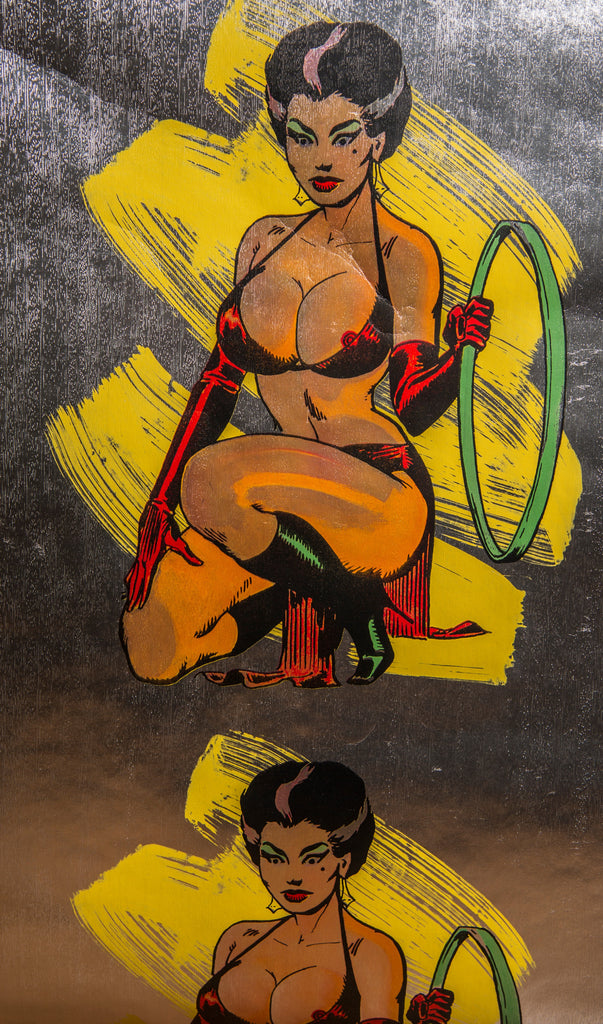Right-hand Woman Wallpaper
JONES, Allen


Marburg: Marburger Tapetenfabrik J.B. Schaefer & Co, 1972. 1972.
Roll of wallpaper comprising 14½ identical, repeated coloured screenprint on silver metallic paper, with full margins. Approx. 8220 x 535 mm (323 ½ x 21 in). This image (also known as Right Hand Woman) was designed by Jones in 1970. It was made as a roll of wallpaper in 1972 by one of the oldest wallpaper factories in Germany in the series X Art Wall Collection. Other artists participating in this extraordinary project included Jean Tinguely, Otmar Alt and Eric Stanton. A single panel sold at Christies in 2008 for £525 and a complete roll would appear to be a scarce item. On its own, this is a striking image. Multiplied fourteen times, it is the stuff of nightmares or dreams. It is impossible to deny that this print is controversial, politically incorrect and sexist. But, whether we like it or not, that is the point for Jones. "It's collateral damage", he said, "I wanted to offend the canons of accepted worth in art. I found the perfect image to do that, and it's an accident of history that these works coincided with the arrival of militant feminism".
Roll of wallpaper comprising 14½ identical, repeated coloured screenprint on silver metallic paper, with full margins. Approx. 8220 x 535 mm (323 ½ x 21 in). This image (also known as Right Hand Woman) was designed by Jones in 1970. It was made as a roll of wallpaper in 1972 by one of the oldest wallpaper factories in Germany in the series X Art Wall Collection. Other artists participating in this extraordinary project included Jean Tinguely, Otmar Alt and Eric Stanton. A single panel sold at Christies in 2008 for £525 and a complete roll would appear to be a scarce item. On its own, this is a striking image. Multiplied fourteen times, it is the stuff of nightmares or dreams. It is impossible to deny that this print is controversial, politically incorrect and sexist. But, whether we like it or not, that is the point for Jones. "It's collateral damage", he said, "I wanted to offend the canons of accepted worth in art. I found the perfect image to do that, and it's an accident of history that these works coincided with the arrival of militant feminism".
